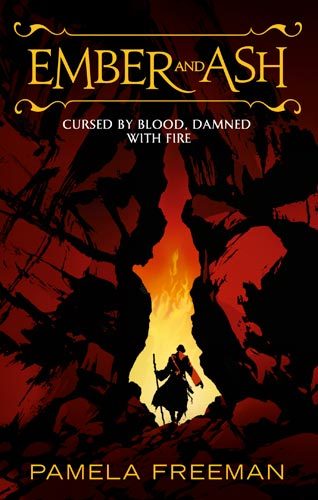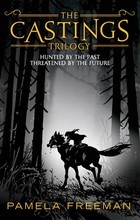 Ember and Ash by Pamela Freeman is a set twenty years after the events at the end of the Castings Trilogy (Blood Ties, Deep Water and Full Circle). It is technically a sequel, and some of the characters from Castings do pop up again, but it very much stands alone. I think the main thing one would miss from not reading Castings, is a deeper exploration of the past colonial racism and oppression. Oh, and there are some spoilers for who survives the world almost ending in Castings, although not all the prominent Castings characters rate a mention.
Ember and Ash by Pamela Freeman is a set twenty years after the events at the end of the Castings Trilogy (Blood Ties, Deep Water and Full Circle). It is technically a sequel, and some of the characters from Castings do pop up again, but it very much stands alone. I think the main thing one would miss from not reading Castings, is a deeper exploration of the past colonial racism and oppression. Oh, and there are some spoilers for who survives the world almost ending in Castings, although not all the prominent Castings characters rate a mention.
A few words on comparisons with the Castings Trilogy first. Castings is a story about colonial invasion, ongoing racial oppression and revenge. It’s much more violent than Ember and Ash and found some aspects (there was a lot of — realistic — sexual violence) very haunting. In terms of social world building, parallels between the Travellers, the oppressed original inhabitants of the Domains, can be drawn to just about any displaced indigenous peoples. However, in Ember and Ash there is less overt racism and, while still relevant, race plays a less life-defining role. Ember and Ash is more a story about places and the powers that reside in different landscapes. The Ice King, who made some background appearances in Castings, is much more prominent, ditto the Power of Fire. It’s also a story about how tenuous the status quo can be and how legal equality does not necessarily translate to social equality, especially when things start to go wrong.
Ember and Ash is more a story about places and the powers that reside in different landscapes. The Ice King, who made some background appearances in Castings, is much more prominent, ditto the Power of Fire. It’s also a story about how tenuous the status quo can be and how legal equality does not necessarily translate to social equality, especially when things start to go wrong.
This is the kind of book you can’t read too quickly lest you don’t absorb all of it. (By corollary, I probably shouldn’t have read it on long-haul flights and while travelling, but I have an unfortunate tendency to pick the wrong books to take on aeroplanes.) Freeman’s writing style is somewhat literary, dwelling on magical symbolism as much, if not more, than action. In some ways, it reminds me of Margo Lanagan’s Tender Morsels, but in style more than content. There was also a lot of lovely imagery, some of it bordering on metaphorical.
The story opens with Ember’s marriage ceremony going awry when the Power (spirit/god) of Fire makes an appearance and takes back the gift of fire until such time as Ember makes the long journey to Fire Mountain. And incidentally, he incinerates her husband. And so begins the quest. Aided by Ash, her sort-of-cousin-but-technically-nephew-and-not-by-blood-anyway, and a few other friends, relatives and guards, she sets off. Meanwhile, the people left behind — her father the Warlord, her mother the seer — are left to organise some means of surviving the not-as-distant-as-it-previously-seemed winter without any fire.
I very much liked Ember as a character. Raised to be a Warlord’s wife by her father and skilled in negotiation, her Traveller mother makes sure Ember knows other practical skills as well. Ash starts off thinking of Ember as his silly highborn cousin who cares only for a good marriage. As the story progresses and Ember is given the chance to prove herself on their journey, he comes to respect her intelligence and character. It was very well done and an interesting transition to watch.
I enjoyed Ember and Ash, but I think I liked Castings more. In the end, despite a similar style, they are structured very differently with different aspects of world-building as story foci. On the other hand, Ember and Ash was more consistently enjoyable since, unlike Castings, it didn’t have interludes of miscellaneous cameo characters between PoV character chapters. In Castings those broke up the flow a bit, despite it all coming together at the end. The romantic plot line in Ember and Ash is unconventional (I don’t think I can explain how without spoilers) but more prominent than any in Castings.
Ultimately, I think more nuance will come through in Ember and Ash if you’ve read Castings before it, but Castings is not for the faint of heart and not necessary to enjoy Ember and Ash.
4.5 / 5 stars

No comments:
Post a Comment
Note: only a member of this blog may post a comment.